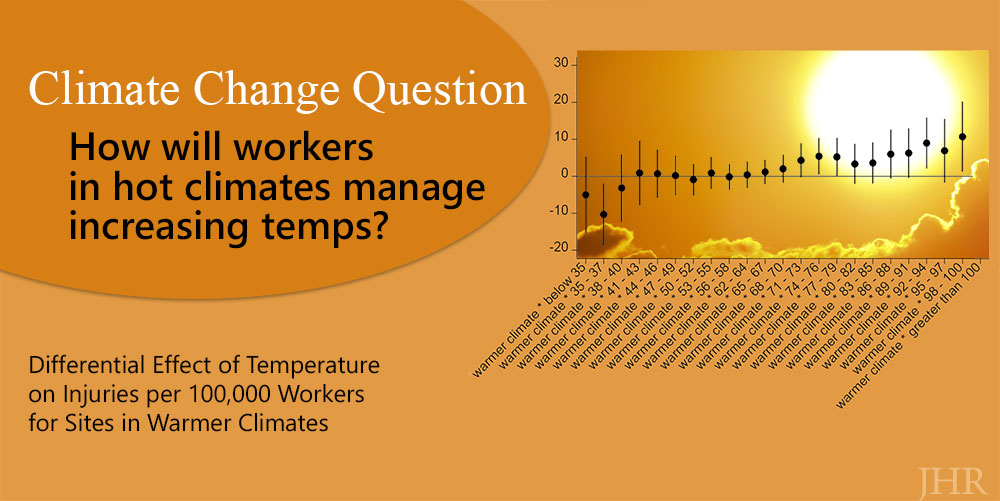Climate Change and Occupational Health—Can We Adapt?
Greenhouse gases accumulating in the earth’s atmosphere are poised to raise global temperatures considerably in a relatively short period of time. While using air conditioning and limiting outdoor exposure can mitigate the adverse effects of high temperatures, these approaches are not feasible in all situations. In particular, the hundreds of millions of workers around the world exposed to outdoor temperatures as part of their jobs may face additional adaptation challenges relative to the rest of the population. Despite considerable attention devoted to understanding the impact of temperature on a variety of outcomes and behaviors, little is currently known about the effect of temperature on workers’ health.
In a new study, Marcus Dillender (University of Illinois–Chicago) assesses the effect of temperature on occupational health by combining worker injury and illness reports with weather information at daily frequencies. He finds that both high and low temperatures have adverse effects on occupational health.
In contrast to previous research on temperature and mortality, Dillender finds no evidence that the ability to adapt to high temperatures has led to hot days having less severe effects on occupational health in warm climates. Instead, the evidence shows that hot days have more severe effects in warm climates, which suggests that avoidance practices may be easier when extreme temperatures are rare.
For example, construction workers in states like Michigan and Wisconsin can avoid working or avoid doing their most dangerous work on the rare day above 95°F degrees. But in states like Arizona or Texas, days over 95°F are common, and working on these days cannot be avoided.
The graph shows estimates of the effect of temperature on workers’ compensation claim rates for warmer-climate areas compared to colder-climate areas, and relative to a base differential between areas when the daily high temperatures are between 59°F and 61°F. The sample includes 2,615,672 observations of sites and days. The injury data come from Mining Safety and Health Administration logs for 2006–2014 and contain information on 13,013 injuries. The graph clearly shows the number of claims increase in warmer climates with higher temperatures.
While adaptation is feasible and practical in many settings with currently available technology, the results of this study suggest that the negative effects of high temperatures on occupational health are more severe when high temperatures are common. Dillender: “This is notable since the effect of high temperatures when high temperatures are common is relevant for assessing the future costs of global warming and for setting policy to either avoid or deal with those costs.”
Read the full study in the Journal of Human Resources: “Climate Change and Occupational Health: Are There Limits to Our Ability to Adapt?” by Marcus Dillender.
***
Marcus Dillender is at the University of Illinois–Chicago.




